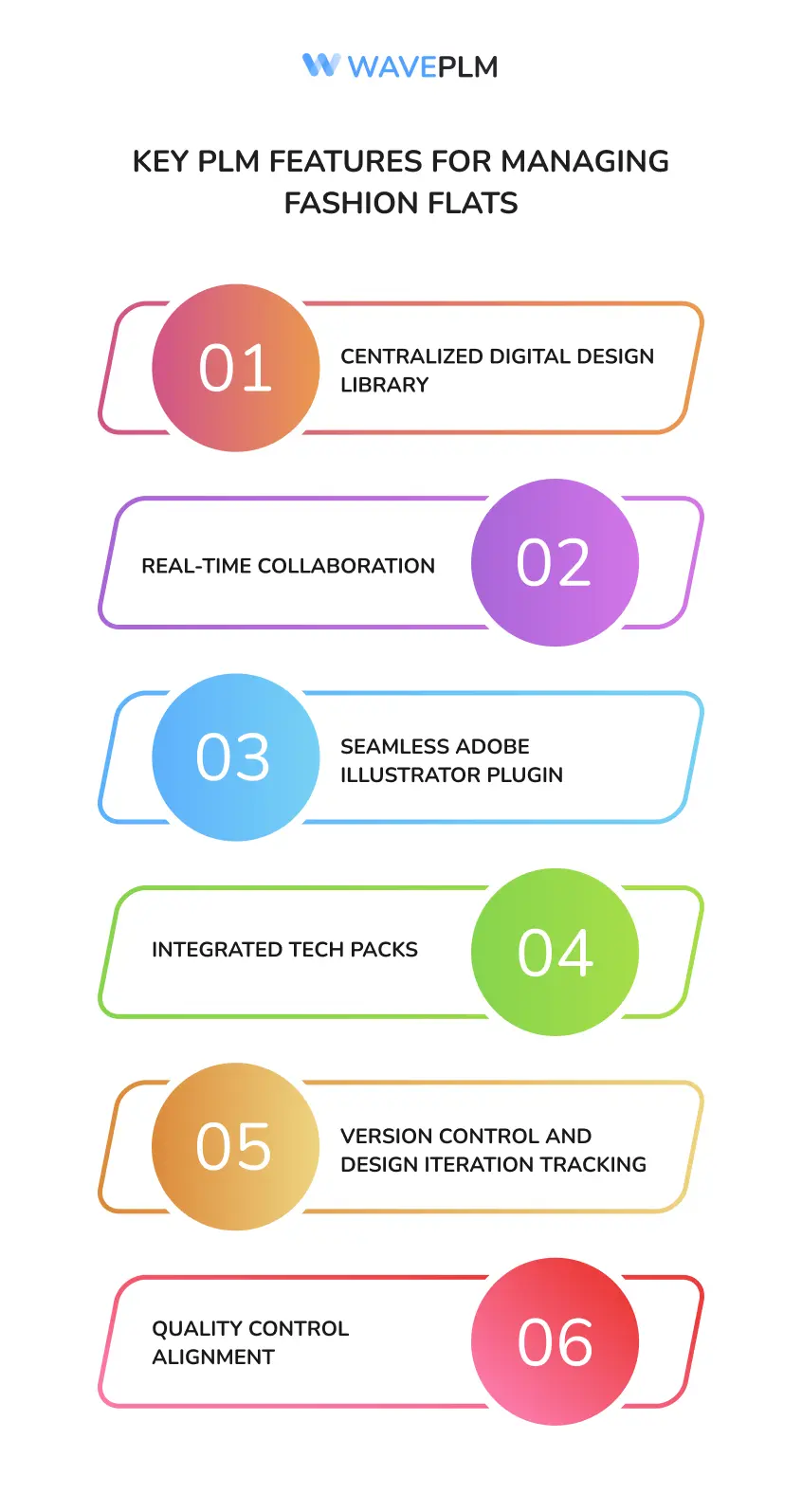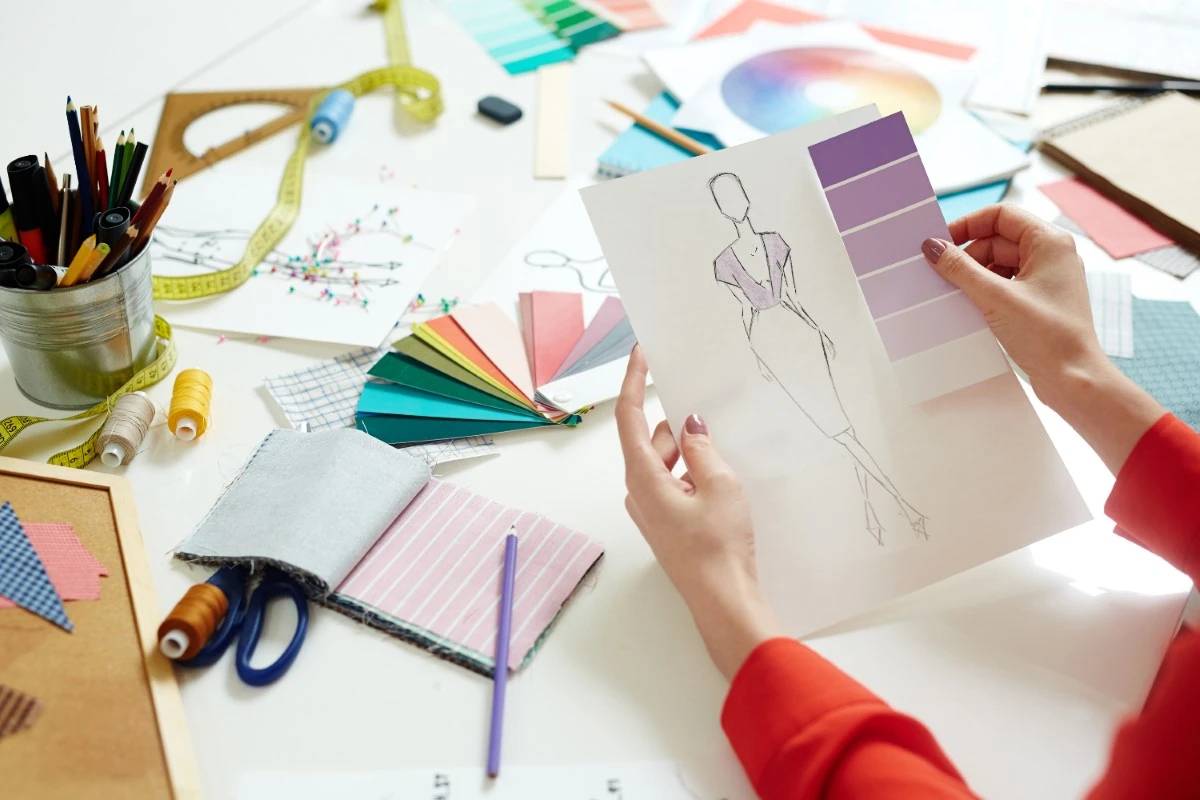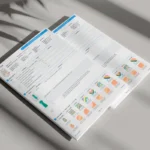
Fashion flats are essential in modern apparel development. In our previous article, we explored how flat sketching evolved from traditional fashion illustrations and why technical flats are vital to clear communication in fashion design. This follow-up article dives deeper into how PLM software transforms the way fashion brands manage, organize, and communicate flat fashion sketches throughout the entire production process.
Why Fashion Flats Need a Central System
Fashion design is a dynamic blend of creativity and structure. Designers begin with fashion illustrations to visualize ideas, experimenting with form, fabric, and fit. But for an idea to make it through sampling and into production, it must evolve into something more technical. This is where fashion flats step in. They turn artistic inspiration into a set of accurate, clear visual instructions.
Flat drawings or technical flats include every detail needed by pattern makers and manufacturers—stitch lines, measurements, and garment construction. These technical sketches form the backbone of the tech packs that drive apparel production.
Without a centralized system for managing these assets, teams can lose track of version updates and important details. That leads to errors, wasted materials, and miscommunications. That’s why leading fashion brands use PLM software to manage flat sketches, organize flat drawings, and ensure everyone—from design to manufacturing—stays on the same page.
What PLM Software Does for Flat Sketch Management
PLM (Product Lifecycle Management) software acts as a single source of truth. It centralizes flat sketch fashion design and allows for better collaboration. Every version of a technical flat, every update to a flat drawing, and every piece of supporting documentation lives in one platform.
Designers, developers, and manufacturers can access the same technical illustrations in real time. This level of transparency improves communication, eliminates duplicate work, and ensures accuracy.
Wave PLM offers seamless integration with Adobe Illustrator. With this plugin, designers can upload fashion flats and technical sketches directly from Illustrator into the PLM platform. This workflow prevents version mismatches and simplifies file management. You don’t have to export and upload files manually—it’s all connected.
Key PLM Features for Managing Fashion Flats
1. Centralized Digital Design Library
All fashion flats, flat drawings, and technical sketches are stored in one organized location. This library supports fast searches by category, season, or designer and allows teams to reuse or reference past work across collections.
2. Real-Time Collaboration
Multiple users can work together in real time. Technical illustrations, comments, and revisions are instantly visible to everyone involved in the design process. There are fewer email chains and fewer file conflicts.
3. Seamless Adobe Illustrator Plugin
Wave PLM includes a built-in plugin for Adobe Illustrator. Designers can stay within their design environment while pushing updated flat sketches, fashion flats, or technical drawings directly into the PLM system.
4. Integrated Tech Packs
Each flat sketch can be linked to a detailed tech pack. This includes a bill of materials (BOM), construction notes, seam types, trim placements, and measurements. Pattern makers and manufacturers receive everything they need in one package.
5. Version Control and Design Iteration Tracking
All changes to flat fashion sketches are logged with timestamps and author information. Teams can trace the entire evolution of a technical flat and easily revert to earlier versions if needed.
6. Quality Control Alignment
Using standardized flat drawings ensures that quality benchmarks are met consistently. Pattern makers and suppliers follow the same visual blueprint, reducing the likelihood of errors during prototyping and production.

Why PLM Software Matters to the Fashion Industry
In today’s fast-paced fashion industry, product development moves quickly. Designers must deliver high-quality results within tight timelines. Fashion flats provide the technical accuracy needed for quick execution. But without a system to manage them, delays and costly mistakes occur.
PLM software brings structure to the creative process. It organizes flat sketching into a repeatable, trackable system. Technical sketches serve as the bridge between design intent and final garment execution. With PLM, these sketches can support costing decisions, supplier negotiations, and quality control.
Flat drawings impact more than just visual design. They directly affect fabric selection, trims, seam durability, and fit accuracy. Managing them through PLM ensures that all production-related decisions are backed by accurate, consistent data.
Supporting Pattern Makers and Manufacturers with PLM
Pattern makers depend on accurate technical illustrations to create garment templates. They use flat drawings to visualize seam placements, fabric behaviors, and construction details. Inconsistent or outdated flats create confusion and missteps.
With apparel PLM software, pattern makers receive technical flats that are always up to date and linked to BOMs, measurements, and reference notes. This level of integration reduces errors and shortens the development cycle.
Manufacturers benefit as well. They can quickly access approved fashion flats, download the tech pack, and quote prices based on clear visual documentation. Every part of the production process becomes more transparent and efficient.
The Design Process in PLM: A Connected Workflow
The design process isn’t linear—it’s iterative. PLM software captures the twists and turns of flat sketch development. From concept to final approval, every step is documented.
Designers can:
- Upload technical sketches directly from Adobe Illustrator in one click
- Tag fashion flats by season, category, or collection theme
- Link each flat to a detailed BOM and track estimated product cost
- Attach feedback and review history to each flat sketch
This transparency makes it easier to meet deadlines, obtain quicker approvals, and maintain accountability across the team.
Ensuring Consistency in Fashion Flats
Large collections include hundreds of items. Keeping flat sketch formatting consistent across designers, categories, and factories is difficult without a system.
PLM software solves this. It enforces consistent formatting standards across teams. All fashion flats follow the same structure for stitch lines, labels, layouts, and notes.
This uniformity improves communication with external partners and reinforces your brand’s professional identity.

Lowering Product Cost Through Better Flat Sketch Management
Flat sketches do more than guide manufacturing—they influence product cost. Technical flats determine how much fabric is used, what kind of labor is required, and which trims need sourcing.
With PLM systems, each flat sketch is tied to real-time costing data. You can analyze how a change in stitch detail or fabric affects cost. By making informed decisions earlier in the design process, you avoid costly rework and stay within budget.
This approach supports sustainable development, as fewer samples are wasted and fewer changes are needed late in the cycle.
A Smarter Future for Fashion Flats with Wave PLM
Flat sketch fashion design bridges art and engineering. But managing it without the right tools limits speed, accuracy, and scalability. Wave PLM helps fashion brands centralize technical sketches, fashion illustrations, and design assets in one system.
Wave PLM’s Adobe Illustrator plugin simplifies uploads, reduces workflow interruptions, and creates a seamless connection between design and production teams. Every stakeholder can access the most recent flat drawing, along with its related BOM, costing data, and quality notes.
Whether you’re managing five styles or five hundred, PLM software ensures:
- Consistency in the illustration of clothes
- Improved product quality through better documentation
- Faster approval cycles with real-time feedback
- Reduced product cost through better version control and BOM alignment
The fashion industry evolves rapidly. Flat sketching remains a foundational part of the design process. With the right PLM system, brands can transform how they manage fashion flats, improve accuracy, and create high-quality garments—faster and smarter.
Want to manage your flats better? Learn how Wave PLM empowers fashion teams from sketch to shelf.





Leave a Reply